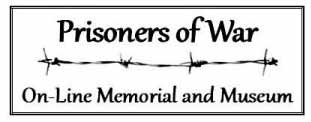Kloster Haina
One of the more interesting POW medical establishments was at Kloster Haina, a small village east of Frankfurt-am-Main, in a former Cistercian Abbey that Philip the Magnanimous converted into a mental hospital four centuries earlier. Kloster Haina existed as a POW establishment only from the spring of 1942 until October 1943, though it had a much longer and continuing existence as an insane asylum. Part of the building was used for the wounded POWs, while some of the remaining sections continued in their original function.
Through the efforts of St. Dunstan’s (a training school for the blind in the United Kingdom), the British Red Cross, the Order of St. John of Jerusalem, the ICRC, the YMCA, and two Allied POWs, Major David L. Charters, RAMC, an ophthalmic surgeon from Liverpool who was captured in Greece, and Lieutenant the Marquess of Normanby, of the Green Howards, who was wounded and captured near Dunkirk, the POW hospital was established as a convalescent centre specializing in POWs blinded as a result of wounds. All anglophone blind POWs were collected here, along with a large number of amputees.
The original German staff was headed by the Chefarzt, Stabsarzt Dr. Erich Zeiss, with an Assistantarzt, Oberarzt Dr. Helmuth Jung. The SBMO in the summer of 1942 was Major John Chapel, RAMC.
When Charters arrived at Kloster Haina in June 1942, the blind school had five teachers ministering to 40 blind POWs. At that time, Kloster Haina held 246 British patients (housed separately in two wings of the main building), 200 French patients, and 600 German lunatics in separate quarters. Despite the specialist interests of Charters, most of the patients at this new camp were amputees, including many Canadians, a few RCAF POW casualties before Dieppe and many survivors of the raid from September 1942 on.
In September, the patient population had increased to 382, plus four MOs, eight medical orderlies, one masseur, two blind teachers, one padre, and an orderly.
Mary Aston wrote in with a story concerning her late father Padre Gedge.
“Seventy years ago, when I was three years old, my father, Padre Gedge was taken prisoner twenty miles from Dunkirk. He was attached to the Field Ambulance Corps and they stayed behind to care for the British casualties.
The first two years were spent in Oflags because Hitler did not want the Padres to lift morale in the Stalags. My father found this very frustrating, but then he was asked to go to Haina, Stalag 9A/H where the blind and amputee prisoners were held. This period of his five years in captivity were much more satisfying as he had plenty of work both helping the prisoners with disabilities and depression and was able to give them occupational therapy.
In Leonard Charles Bolke’s story on the BBC’s WW2 People’s War you can read
Several of us were transferred to KLOISTER HAINA STALAG IX A/H which was part of an old monastery. Most of the prisoners here were DUs (Definitely Unfit for further military service) and living in hope of repatriation to the UK.
These men had all been seriously wounded and had been prisoners for up to three years already. They were blind, limbless, disfigured, and burned. Some of them had more than one of these afflictions to cope with.
Their courage and good spirits had to be seen to be appreciated. The RAF prisoners who were not so seriously injured were anxious to assist the other prisoners whenever possible, but the latter were extremely independent.
POWs
Found 0 POWs
